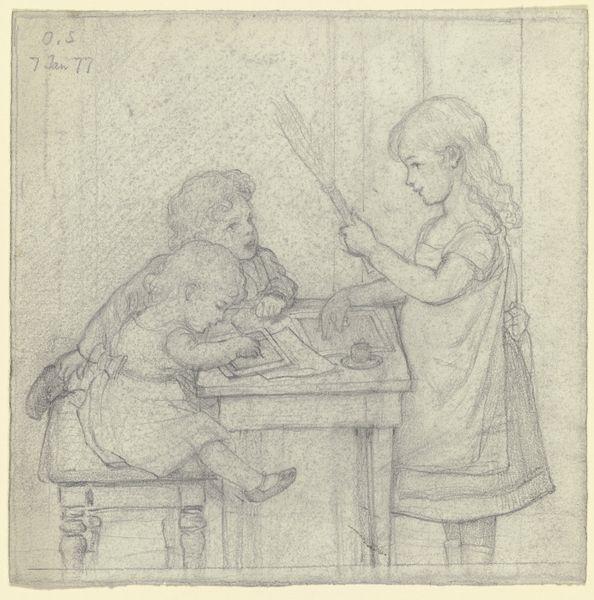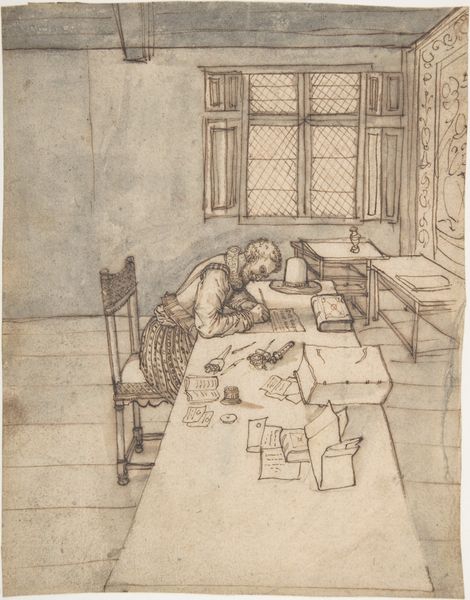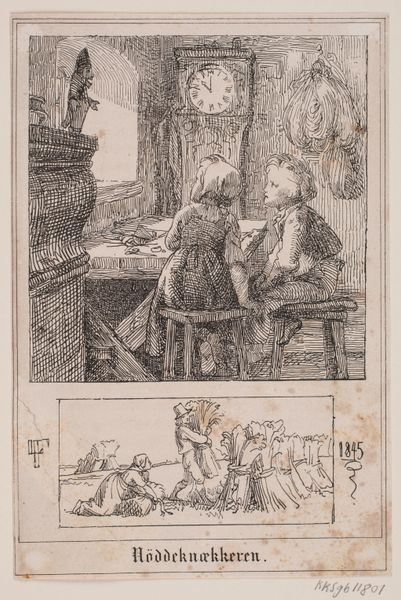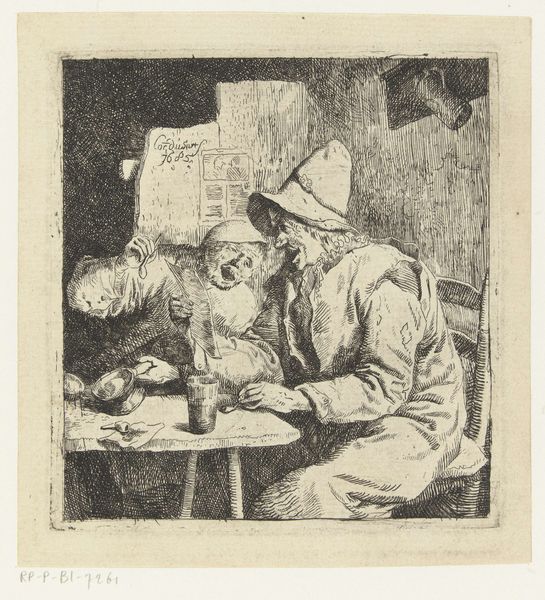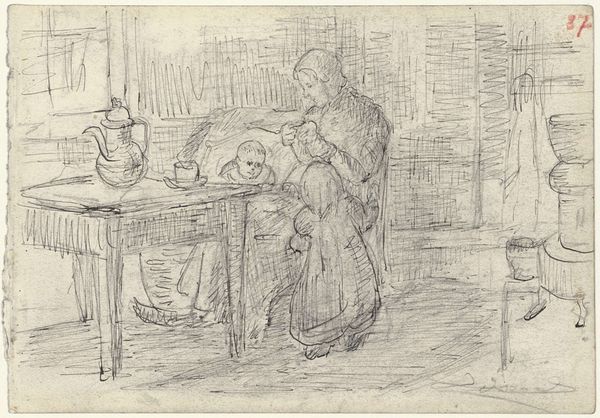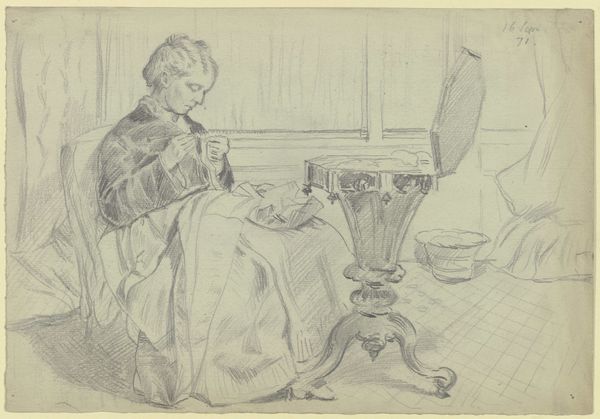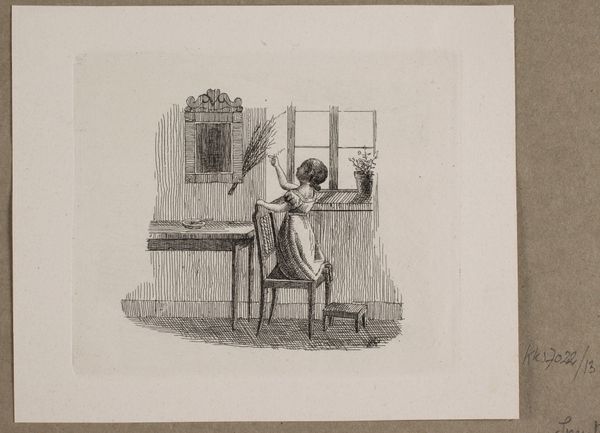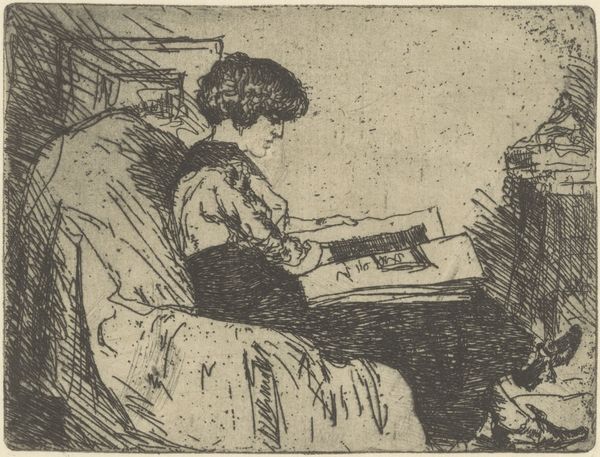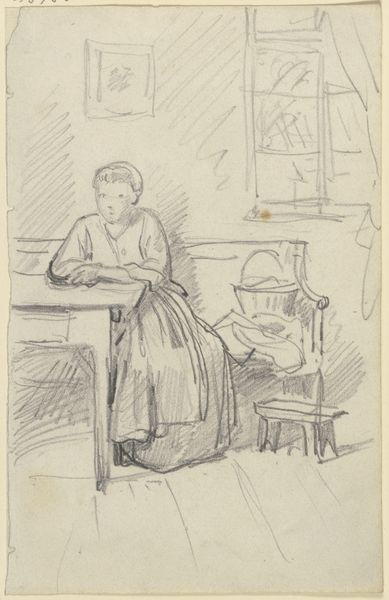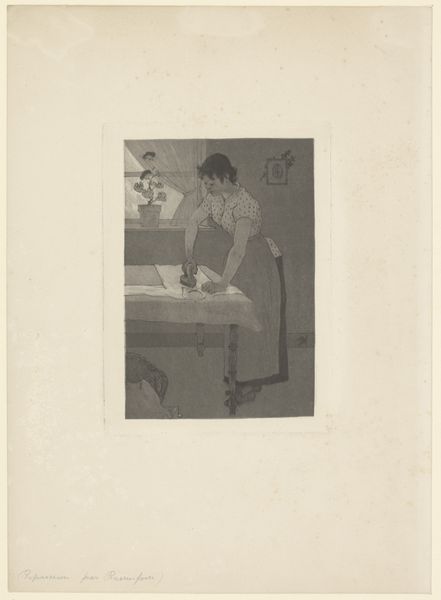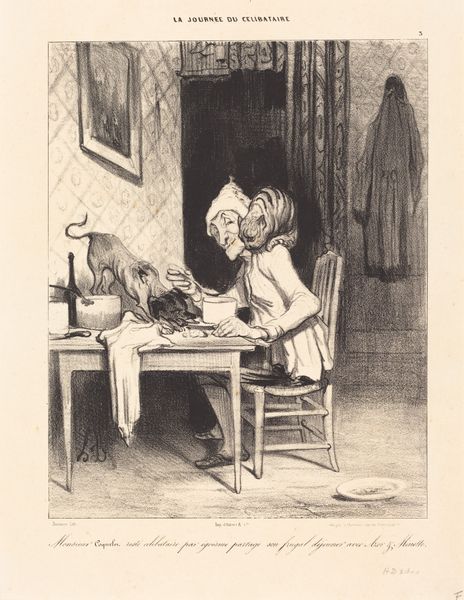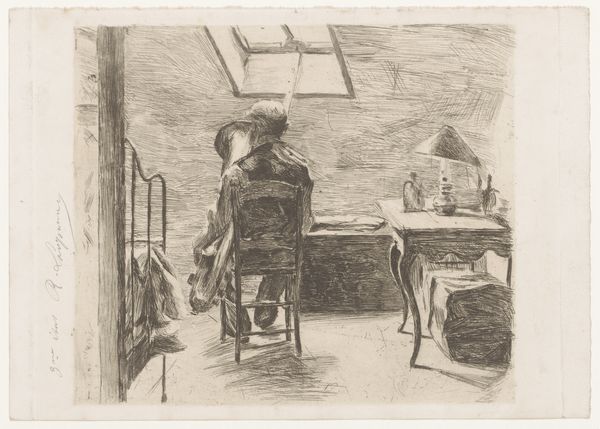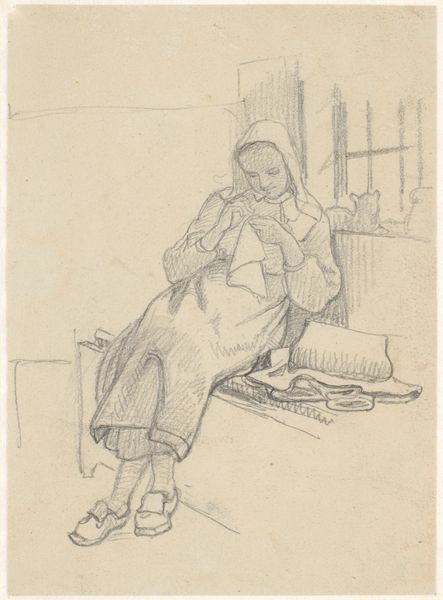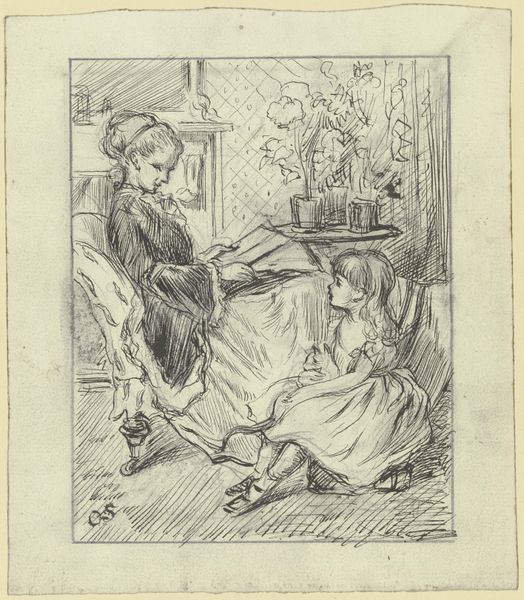
drawing, coloured-pencil, ink, chalk
#
portrait
#
drawing
#
coloured-pencil
#
baroque
#
ink
#
coloured pencil
#
chalk
Copyright: Public Domain
Curator: This is "Sara Marrel, seated at a table and engaged in embroidery," a drawing created in 1658 by Johann Andreas Graff. It's currently housed here at the Städel Museum. Editor: My first thought is of quiet industry. The muted colors—almost sepia-toned—give it a sense of gentle dedication and the sort of solitude that comes from a deep absorption in craft. Curator: Graff was a sought-after portraitist, primarily working within the German Baroque tradition. His depictions, while realistic, often reflect the societal emphasis on portraying the sitter's virtue and social standing. Editor: You can really see that in Sara's posture, can't you? There's a composed dignity about how she sits, head bowed not in defeat but in concentration. I wonder, was embroidery just a genteel hobby, or was it a form of subtle self-expression for women at the time? Curator: It was both. Embroidery certainly offered a socially acceptable creative outlet, but, importantly, these skills were tied to economic realities for many women who managed household production. There's been considerable scholarly debate around needlework, considering if it was just a form of female oppression or if it might offer ways for them to resist these restrictions through covert communication. Editor: Oh, that's juicy! Secret messages sewn into tapestries—it's like the Victorian version of coded emails! It does change how you see it. From passive hobby to potential subversive activity, which, admittedly, my artist brain finds way more interesting! Curator: Precisely. This tension between conformity and potential resistance underscores the complexity of gender roles in 17th-century society, something frequently visible if you examine the historical reception of domestic items in artworks. Editor: Knowing that adds so many layers! The work is not only pretty, but politically suggestive—it is beautiful in its defiance. I came away with a whole different vision. Curator: Indeed. Analyzing Graff’s composition within the scope of its historical influences has opened my eyes too. Thanks for sharing your impressions with me.
Comments
stadelmuseum about 2 years ago
⋮
Johann Andreas Graff, who would later be Maria Sibylla Merian’s husband, was a journeyman in the workshop of Jacob Marrel, Merian’s stepfather, for several years. Here he drew the likeness of her somewhat older stepsister Sara Marrel at her evening embroidery. She appears to be working after a pattern: a sheet of paper spread out over her embroidery frame. Maria Sibylla would go on to publish floral compositions suited and intended for such purposes.
Join the conversation
Join millions of artists and users on Artera today and experience the ultimate creative platform.
